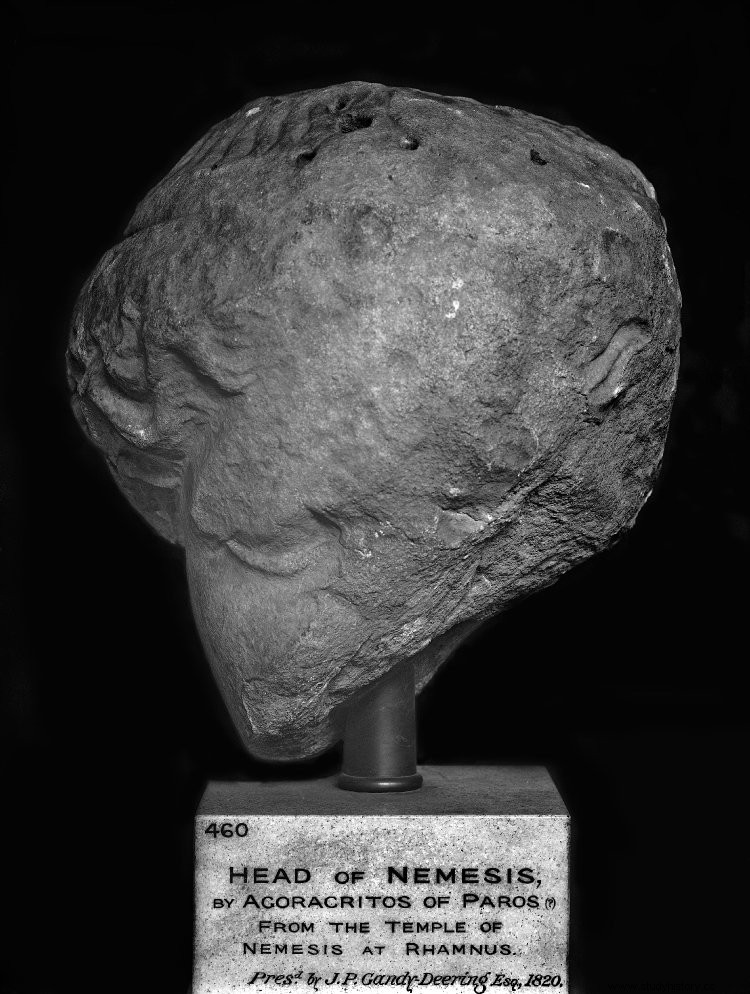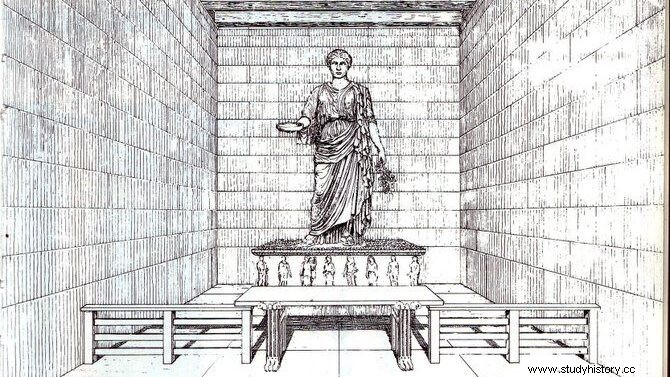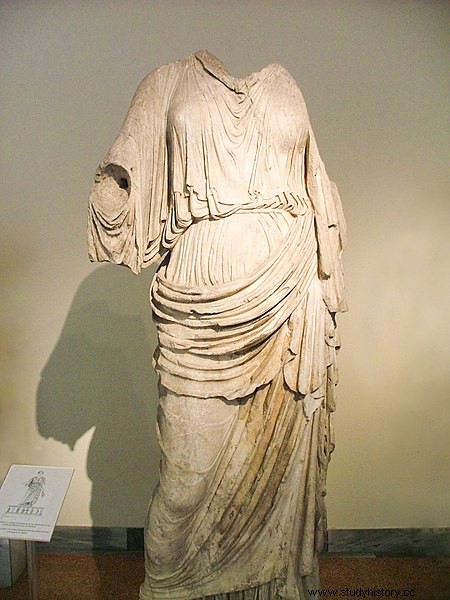Were the Persians carrying a block of marble at the Battle of Marathon? That's what Pausanias says:

Indeed, on the road between the site of ancient Ramnunte and Marathon is the sanctuary of the goddess Nemesis, surrounded by lush forests. As early as the 6th century B.C. There was a temple here dedicated to the goddess of retributive justice , solidarity, revenge and balance.
That first temple would be destroyed by the Persians in 480 BC. and rebuilt, some fifty years later, with larger dimensions. When the Persians set about destroying it, laying waste to the place, they probably did so for a singular reason. And it is that ten years before, in 490 B.C., the Athenians and their allies had defeated them in the battle of Marathon, snatching from them the block of marble that Pausanias reports, and that they brought to raise a triumphal stele, and making with it a statue of Nemesis, precisely the one that was inside the temple.

Legend has it that this marble block was taken from the Persians after the battle and with it Phidias or Agoracritus, one of his students, carved the statue of the goddess that was kept inside the temple, on a base decorated with reliefs and in front of the altar.
Strabo says about her:
The dimensions of the statue reached 4 meters in height, and it was described by the Roman historian Marco Terencio Varrón as the best example of Greek sculpture .
In 1820 the British architect John Gandy found a life-size marble head from a statue of Nemesis, drilled for a gold crown, on the site of the sanctuary, which was sent to the British Museum.

Subsequently, many parts of the original statue appeared, reconstructed in 1972 from hundreds of fragments found scattered, as well as the base, about 90 centimeters high and 240 wide. On three of her sides a scene is depicted, almost circular, showing Helena's presentation to her mother, her Nemesis, by Leda.

The work of collecting the 340 fragments, and their final assembly, was the work of the archeology professor at the University of Thessaloniki George Despinis. However, the dating places its size around 430 BC, that is, about 60 years after the Battle of Marathon. Of course, from the large number of small fragments recovered, the researchers deduced that it had been vigorously and systematically destroyed in the 4th century AD, presumably by Christian fanatics given free rein by Theodosius to vandalize pagan temples and statues.
The reconstruction also made it possible to identify up to 11 smaller-scale Roman copies.
Fonts
Nemesis (Penn Museum) / British Museum / Miles, M. (1989). A Reconstruction of the Temple of Nemesis at Rhamnous . Hesperia:The Journal of the American School of Classical Studies at Athens, 58(2), 133–249. jstor.org/stable/148334 / Odysseus (Greek Ministry of Culture) / Wikipedia.
